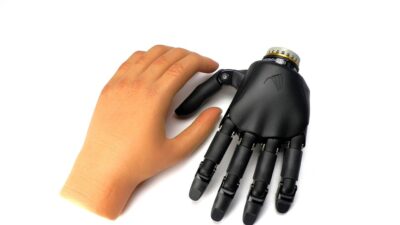In recent years, artificial intelligence (AI) has transcended the realm of complex algorithms and high-end enterprise applications. Today, it’s seamlessly integrated into the consumer electronics we use daily, enhancing functionalities, personalizing experiences, and making our interactions with technology more intuitive. From smartphones to home appliances, AI is revolutionizing the way we live, work, and play.
Smarter Smartphones
At the forefront of AI integration are smartphones, which are now equipped with advanced features that go beyond traditional functionalities. AI-driven personal assistants, like Siri, Google Assistant, and Alexa, have refined speech recognition and natural language processing. This allows users to carry out tasks hands-free, from setting reminders to controlling smart home devices.
Moreover, AI enhances photography. Smartphones with AI-powered cameras can automatically adjust settings based on the scene—optimizing lighting, color balance, and even recognizing faces. This means users can capture professional-quality photos with minimal effort, elevating the photography experience for amateurs and enthusiasts alike.
Intelligent Home Devices
The rise of smart homes is another significant transformation fueled by AI. Devices like smart thermostats, security cameras, and lighting systems learn user preferences over time. For instance, a smart thermostat can analyze your habits and adjust the temperature accordingly, ensuring comfort while optimizing energy efficiency.
Smart speakers, equipped with AI, not only play music but also manage daily tasks, answer questions, and control other smart devices. The integration of AI allows these devices to learn and adapt to user preferences, becoming more efficient over time. Through voice commands, users can create a personalized environment, automate mundane tasks, and enhance their overall quality of life.
Enhanced Wearables
Wearable technology has experienced a technological renaissance due to AI advancements. Smartwatches and fitness trackers are not just tracking steps and heart rates; they’re now equipped with AI algorithms that analyze health data to provide insightful feedback. For instance, these devices can monitor sleep patterns, detect irregular heart rhythms, and even offer personalized workout recommendations based on performance data.
Additionally, some wearables are integrating emotional AI, which aims to understand user emotions through biometrics and patterns. These insights can help users manage stress and overall mental well-being, transforming wearables into health companions.
Smart Appliances
AI is also making waves in the kitchen and laundry room. Smart appliances, from refrigerators that track inventory to washing machines that optimize cycles based on fabric type, are becoming increasingly common in homes. AI-enhanced refrigerators can remind users when items are about to expire or suggest recipes based on available ingredients, thereby reducing waste.
Moreover, AI-driven robotic vacuums employ machine learning to map out homes, navigate rooms efficiently, and adjust cleaning patterns based on the floor type. These appliances not only save time but also enhance cleanliness with minimal effort from the user.
Personalized Entertainment
In the realm of entertainment, AI is reshaping how we consume content. Streaming platforms like Netflix and Spotify use advanced algorithms to analyze viewing habits and preferences, recommending shows, movies, and music tailored specifically to each user. This personalization creates a more engaging experience, allowing consumers to discover content they may not have otherwise found.
Gaming also benefits from AI, with smarter non-player characters (NPCs) that provide challenging and dynamic gameplay. AI is pushing the boundaries of interactive storytelling, creating immersive experiences that adapt to player choices and actions.
Conclusion
The integration of AI into everyday consumer electronics is not just a trend; it’s a transformative process that promises to enhance convenience, personalization, and efficiency in our lives. As technology evolves, the lines between machines and human interaction continue to blur, paving the way for smarter, more connected environments.
Looking ahead, the future of consumer electronics will likely see even more sophisticated uses of AI, making our devices not only tools but essential companions in our daily routines. Embracing these advancements means stepping into a world where technology truly understands and adapts to our needs, making life easier and more enriching than ever before.



